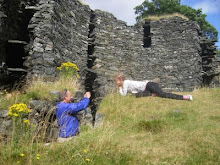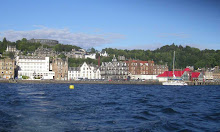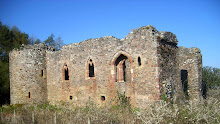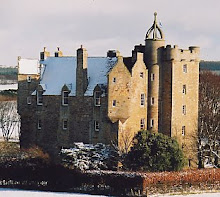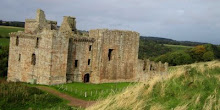 Spring has come early to Nairnshire. Today I bicycled out to one of my favourite spots, Barevan Kirk. Now a ruin, it was built in the 13th century on a site which had probably seen Christian worship since the days of St Columba in the 6th century. As you may see, Barevan is full of old gravestones; many of the inscriptions are irregular, like those cut by children into the trunks of old beech trees.
Spring has come early to Nairnshire. Today I bicycled out to one of my favourite spots, Barevan Kirk. Now a ruin, it was built in the 13th century on a site which had probably seen Christian worship since the days of St Columba in the 6th century. As you may see, Barevan is full of old gravestones; many of the inscriptions are irregular, like those cut by children into the trunks of old beech trees.The most evocative tombstone in the kirk yard is that of Elizabeth Campbell of Clunas. Beautiful and well educated, she was born in Rome where her father was living in exile following his part in the 1715 Rising. She was engaged to tall, red-headed Alexander MacGillivray of Dunmaglass who led Clan Chattan at the Battle of Culloden; and since Clan Chattan was the first clan to charge in that well-documented disaster, he led the last ever Highland Charge. Every tourist visiting the battlefield walks past his memorial stone by the 'Well of the Dead'.
It may be that Elizabeth was also one of those local ladies who watched the battle. It is certain that some time afterwards, she bribed the picquets to release MacGillivray's body which was then buried in nearby Petty kirk yard. Elizabeth, aged 24, survived MacGillivray by just four months.
 Just outside the kirk yard is a new private burial ground in which the late Lord Cawdor, father of the present earl, lies buried. He converted to Roman Catholicism late in life and thereby lies a longer story.
Just outside the kirk yard is a new private burial ground in which the late Lord Cawdor, father of the present earl, lies buried. He converted to Roman Catholicism late in life and thereby lies a longer story.















































